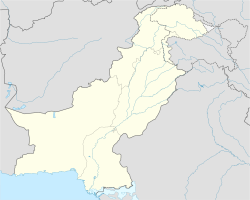Kallar Syedan کلر سیداں | |
|---|---|
| کلرسیداں | |
| Coordinates: 33°24′52″N73°22′43″E / 33.41444°N 73.37861°E | |
| Country | Pakistan |
| Region | Punjab |
| District | Rawalpindi District |
| Tehsil | Tehsil Kallar Syedan |
| Capital City | Kallar Syedan |
| Towns | 15 |
| Union councils | 23 |
| Government | |
| • Type | TMA |
| Area | |
• Total | 421 km2 (163 sq mi) |
| Elevation | 520 m (1,710 ft) |
| Population (2017) | |
• Total | 217,273 |
| Time zone | UTC+5 (PST) |
| Area code | 051 |
Kallar Syedan is a tehsil in the Rawalpindi District, Punjab, Pakistan. Earlier it was a part of the Kahuta Tehsil, it became a separate tehsil on 1 July 2004.
Contents
- Demography
- Administrative divisions
- Delimitation 2018
- Towns and villages
- Notable people
- Places of interest
- Gallery
- References
Kallar Syedan is the capital of the tehsil. [1]







